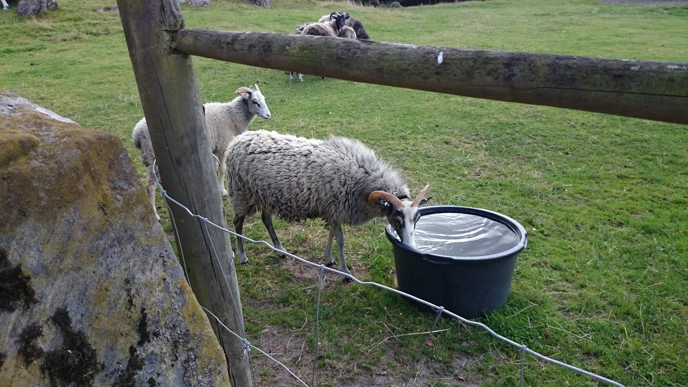
Genetic diversity in past and present Swedish sheep
KEY POINTS- By studying the sheep's DNA and pedigrees we can describe how much genetic variation that exists in different breeds of sheep in Sweden.
- We have collected samples from more than 1,000 sheep in Sweden.
- We will also investigate DNA from ancient archaeological samples and compare sheep living today and ancient sheep.
Project overview
Participants
More related research
Short summary
We want to find out how much genetic variation there is in the Swedish sheep breeds. We also want to compare modern sheep with sheep that existed in Sweden in the past.
By studying the sheep's DNA and pedigrees we can describe how much genetic variation that exists in different breeds of sheep in Sweden. We are also investigating which Swedish breeds of sheep that are most closely relaetd to each other and how closely related the Swedish breeds of sheep are with breeds of sheep in other countries. We have collected samples from more than 1,000 sheep in Sweden. Some of the samples have already been investigated using different methods, but it is an ongoing project and more samples will be investigated in the future. We will also investigate DNA from ancient archaeological samples and compare sheep living today and ancient sheep.
The breed we so far have studied in most detail is Gute sheep. We have shown that inbreeding is at a low and stable level and that the conservation programs seem to be successful.
Studies of endogenous retroviruses of the breeds Klövsjö sheep, Värmlands sheep, Swedish Finewool sheep, Gute sheep and Roslag sheep showed that they had characteristics of primitive breeds that came to Europe with the first wave of sheep migration.
We are currently analyzing data from the so-called SNP chip (hundreds of thousands of sites in sheep DNA) to get more detailed results of the sheep's variety and origin.
Collaborations
In addition to the researchers from SLU, the project team also includes Christina Rochus, University of Edinburgh.
Publications
Mukiibi R, Rochus CM, AnderssonG, Johansson AM. 2015. The use of endogenous retroviruses as markers to describe the genetic relationships among local Swedish sheep breeds. Animal Genetics 46(2):220-223
Rochus CM, Johansson AM. 2017. Estimation of genetic diversity in Gute sheep: pedigree and microsatellite analyses of an ancient Swedish breed. Hereditas 154:4